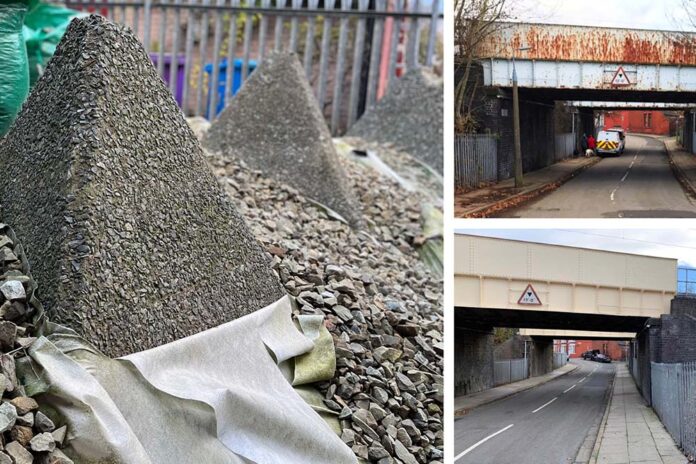A new World War II memorial has been unveiled by locals and railway workers in Liverpool.
It has been made from forgotten anti-tank blocks known as ‘dragon’s teeth’ which were uncovered during bridge maintenance work. Staff from Network Rail found the concrete fortifications whilst carrying out repairs between Mossley Hill and Edge Hill.
The blocks had been hidden from view for decades, obscured by trees and undergrowth. But now they have been put on full show, alongside a commemorative plaque.
The anti-tank devices were used across Europe – by both sides of the conflict – to halt invading tanks and light infantry. They were also nicknamed ‘Toblerone lines’ after the distinct Swiss chocolate.
These particular blocks were laid in June 1940 as part of the Mersey Garrison Defence.
At Stalbridge Avenue, the ‘dragon’s teeth’ would have blocked the road, transforming the railway embankment into a considerable obstacle against tanks or other vehicles that might attack the vital port of Liverpool.
Instrumental in getting the lost defences the recognition they deserved were local historian Helen O’Gorman and life-long resident Brian Morris.
Brian, 93, said: “The ‘dragon’s teeth’ and the plaque are wonderful memorials to those days in 1940 when the whole nation was threatened with invasion. We are glad that these memorials will stay up for a long period so that people will remember at one time the city of Liverpool was in fear of being conquered.”
Resident and local historian, Helen O’Gorman, said: “We’re really thankful to Network Rail for making a feature out of these second world war relics so future generations can learn about what it was like around here during wartime. It’s also great that Brian has been able to share his memories and that this has all been done in time for Remembrance Sunday this weekend.”
Network Rail maintenance team leader, Richard Yost, said: “From time to time we do find interesting objects when maintaining and improving the railway for passengers and freight, but this is the first time I’ve come across anything like this before.
“It’s great that we’ve been able to work with the local community to uncover this hidden history so future generations can understand just how important these wartime relics were in protecting Britain from being invaded.”
The work to strengthen and repair the railway bridges that led to this discovery took place in 2020 and cost £120,000 as part of a Great North Rail Project investment.







































 0113 2082620
0113 2082620 info@railbusinessdaily.com
info@railbusinessdaily.com 15 Mariner Court, Wakefield WF4 3FL
15 Mariner Court, Wakefield WF4 3FL

